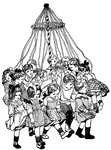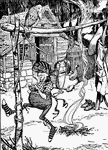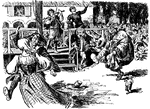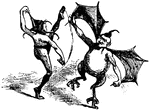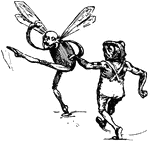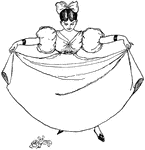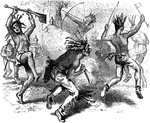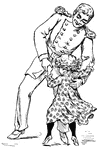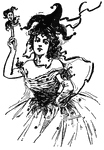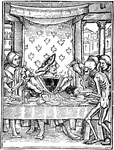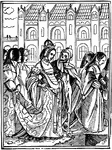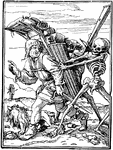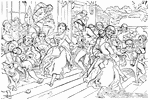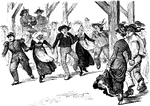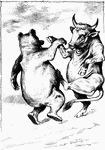Search for "dance"
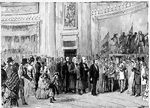
Grant's Second Inauguration as President
Inauguration ceremony for General Grant for his second term as President.

Civil War Musical Entertainment
"Extempore musical and terpischorean entertainment at the United States arsenal, Baton Rouge, La., under…

War Dance
"Camp life in the West. During one of the pauses in the active part of the Missouri campaign our special…
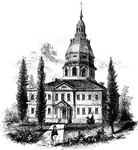
Annapolis State House
"The State House in Annapolis. This fine building is situated upon an elevation in the center of the…

Ancile
"Ancilia carried by Salii. The sacred shield carried by the Salii, and made of bronze. The original…

Salatio
"Dancing. The dancing of the Greeks as well as of the Romans had very little in common with the exercise…
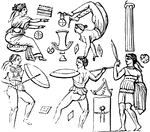
Salatio
"Dancing. The dancing of the Greeks as well as of the Romans had very little in common with the exercise…
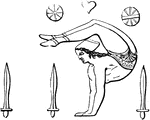
Salatio
"Dancing. The dancing of the Greeks as well as of the Romans had very little in common with the exercise…
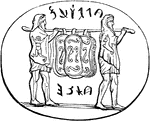
Ancilia
"According to the ancient authorities, it was made of bronze, and its form was oval, but with the two…
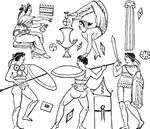
Pyrrhic Dance
"The most famous of all the war-dances of antiquity, is said to have received its name from one Pyrrichos,…
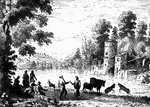
Dance by the Riverside
This painting by Claude Gelle Le Lorrain is a great example of his technique. He uses the rustic, rural…
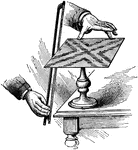
Vibrating Plates
"Support, as shown, a glass or brass plate, square or round, and strew it evenly with fine sand. Place…

Cat and Dancing Dogs
A cat sitting solemnly as dogs dance down the hallway, in the story "How Cats Came to Purr."
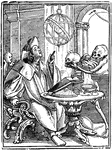
Dance of Death, The Astrologer
The Astrologer, from Hans Holbein's series of engravings, Dance of Death.
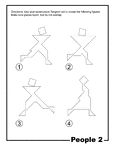
People Outline Tangram Card #2
Outlines of people (runners, dancers) made from tangram pieces. Tangrams, invented by the Chinese, are…
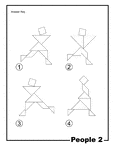
People Outline Solution Tangram Card #2
Solutions for outlines of people (runners, dancers) made from tangram pieces. Tangrams, invented by…
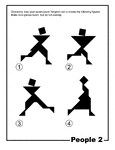
People Silhouette Tangram Card #2
Silhouette outlines of people (runners, dancers) made from tangram pieces. Tangrams, invented by the…
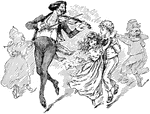
Man Playing Violin with Children Dancing
An illustration of a man playing a violin while children were dancing.
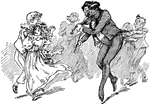
Man Playing Violin with Children Dancing
An illustration of a man playing the violin while children dance around.

Elves and Fairies Dancing
According to Norse mythology, in Elfland, elves and fairies would dance in a circle in the moonlight.…

King & Queen Dancing with Group of People
An illustration of a king and queen holding hands and dancing with a large group of people.

The Plowman
The Plowman is a print that was designed by German artist Hans Holbein in 1538. It is part of a series…
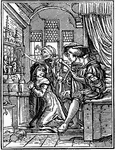
The Nun
The Nun is a print that was designed by German artist Hans Holbein in 1538. It is part of a series called…
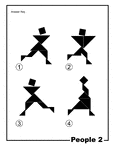
People Silhouette Solution Tangram Card #2
Solutions for silhouette outlines of people (runners, dancers) made from tangram pieces. Tangrams, invented…

Flea Dance
An illustration of five fleas dancing on a platform. Two fleas are dancing together as a pair and the…

John the Baptist Prays in Prison Just Before His Beheading
"And she, being put forward by her mother, saith, Give me here on a platter the head of John the Baptist.…

